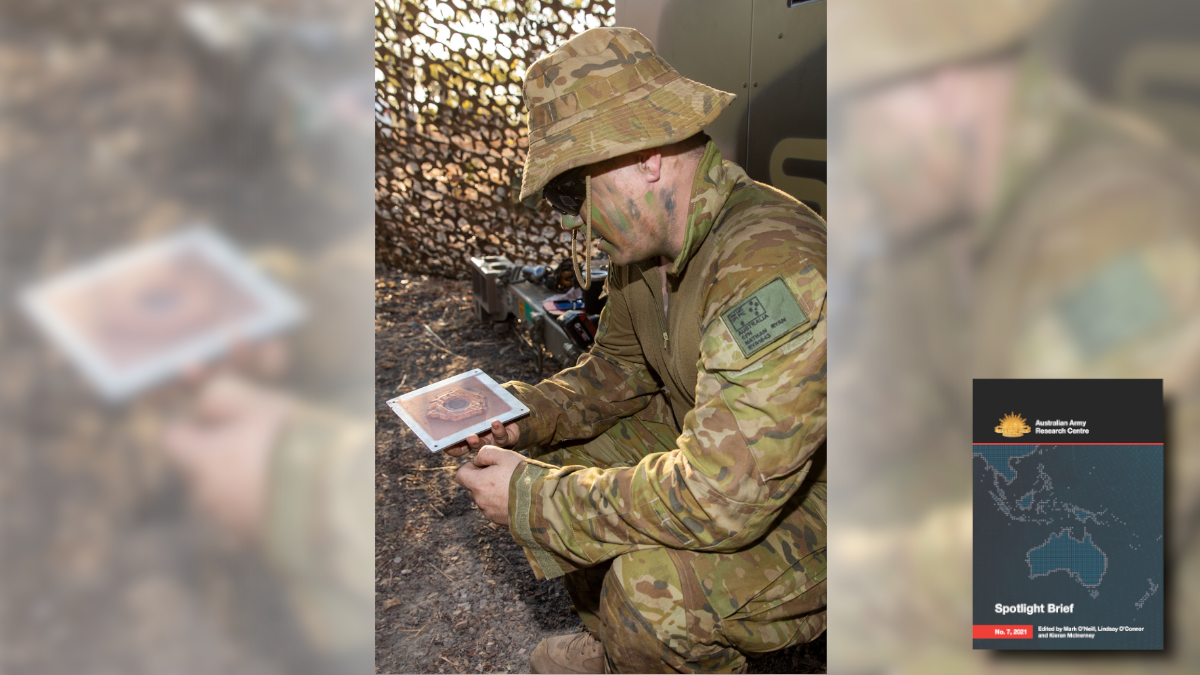The content in this article is an extract of Spotlight Brief 7/21.
ResQBot 2.0: An improved Design of a Mobile Rescue Robot with an Inflatable Neck Securing Device for Safe Casualty Extraction
Applied Sciences – Jun 2021
The authors of this study propose a novel design for a mobile rescue robot that can extract casualties from dangerous areas. They present ResQbot 2.0 – a stretcher-type robot capable of safely performing extraction through loco-manipulation that is synchronised with a conveyer belt and a mobile base to load casualties from the ground onto a stretcher bed gently. They believe that their design will ensure the safety of first responders and minimise the possibility of creating further damage or additional risk to casualties. The verification work done through successful experiments in the Gazebo physics engine simulator offer additional opportunities for Army interest across other land materiel. These initial findings indicate that ResQBot 2.0 could prove invaluable for loading and transporting casualties for future Army rescue missions, or other mission sets in complex terrain.
Related:
‘Cork Rescue Robots Set to go Global to Assist in Rescues of Landmine Casualties’, Echo Live, 03 Aug 21
‘How Robots Helped Out After the Surfside Condo Collapse’, IEEE Spectrum, 02 Aug 21
‘Robots Still Suck. It’s All They Can Do to Stand Up – Never Mind Rise Up’, The Register, 07 Jul 21
‘An expert on search and rescue robots explains the technologies used in disasters like the Florida condo collapse’, The Conversation, 30 Jun 21
‘Design and Development of a Mobile Robot for Search and Rescue Operations in Debris’, International Journal of Applied Mathematics Electronics and Computers, 01 Dec 21
Autonomous Technology and Dynamic Obligations: Uncrewed Maritime Vehicles and the Regulation of Maritime Military Surveillance in the Exclusive Economic Zone
Asian Journal of International Law – Mar 2021
The value in having a comprehensive picture of what is happening in the maritime domain has led nations to focus investment on a range of maritime surveillance assets. For instance, Australia’s Attack-class submarine purchase is the largest acquisition project in Australian history. While ignored by other armies and maritime forces focusing on larger platforms; for a littoral force like the Australian Army, there must be smaller assets to provide similar capabilities in the inshore environments. The development of uncrewed marine vehicles (UMVs) will dramatically increase the possible scale in intelligence gathering operations. They can operate on or below the surface, be remotely controlled, pre-programmed, or have the capacity for some autonomous operations. In this article, Simon Mckenzie identifies some essential capabilities for UMVs to remain compatible with the United Nations Convention on the Law of the Sea. Legal obligations will require equipping UMVs with the capacity to communicate something about their identity and the purpose of their mission. For the future Amphibious Centre of Excellence, an understanding of these issues is vital.
Related:
‘Navy Large Unmanned Surface and Undersea Vehicles’, Congressional Research Service, 02 Aug 21
‘Drones of the sea: the rise of unmanned surface vehicles’, Naval Technology, 23 Jul 21
‘World-first Autonomous Marine Systems Course to Run in Townsville’, Australian Defence Magazine, 29 Mar 21
‘Autonomous Marine Robots Sent Out to Explore and Maintain Equipment’, Institutions of Mechanical Engineers, 17 Mar 21
‘Unmanned Surface and Underwater Vessels Receive New Position System Technology’, Vision Systems Design, 06 Feb 21
Demonstrating Interoperability between Unmanned Ground Systems and Command and Control Systems
International Journal of Intelligent Defence Support Systems – May 21
This paper describes NATO efforts to integrate command and control systems with uncrewed ground vehicles. Primarily done at a basic standards approach (especially the Joint Architecture for Unmanned Systems) instead of at the higher levels that most nations have attempted, it found that not only was this feasible, but highly beneficial as it could be extended rapidly. While this success raised additional complications, it reinforces the recent lines of effort established by the Land Network Integration Centre to develop common architectural systems for all Army materiel – including uncrewed platforms.
Related:
‘Embracing open architectures’, New Electronics, 02 Sep 21
‘Generic Vehicle Architecture’, Think Defence, 24 Jul 21
‘Defining a Future-Proof Generic Soldier Architecture’, Luminact, 2019
‘Australian Generic Vehicle Architecture’, Land Network Integration Centre, Mar 19
‘Implementing a Generic Vehicle Architecture for the Australian Defence Force Land Environment’, Luminact, 2017




